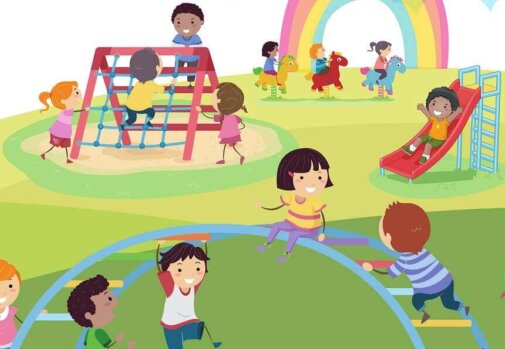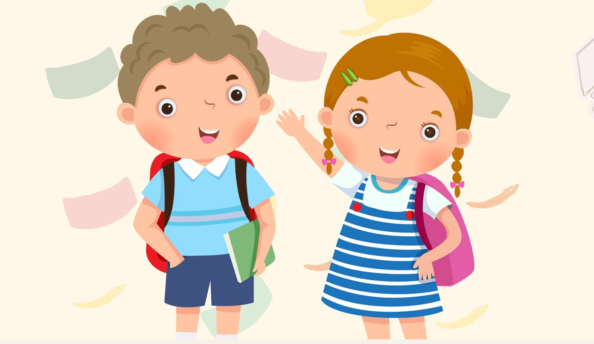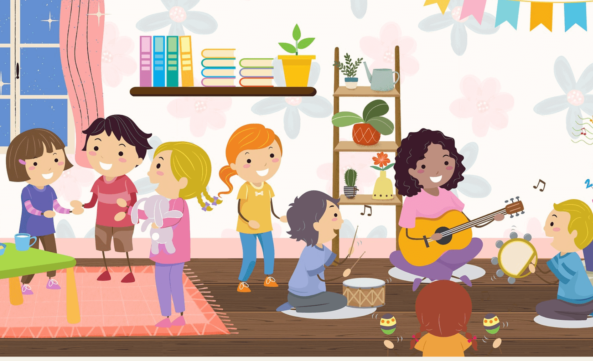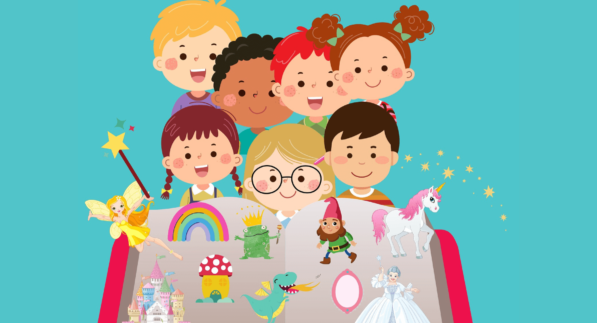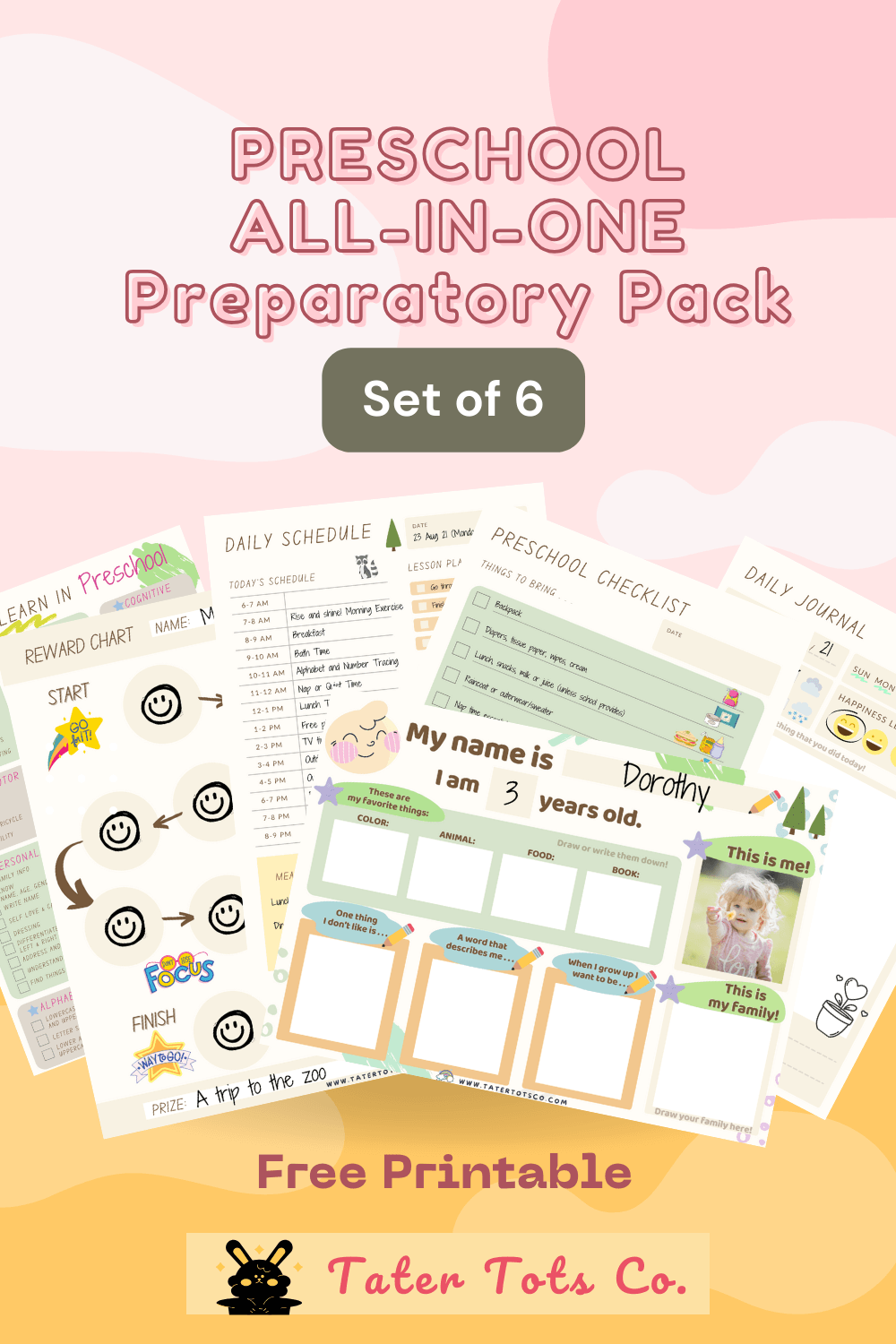
Reward Good Behavior During Easter (Free Printable Bunny Reward Chart)
Introduction
As Easter approaches, many parents are looking for ways to encourage good behavior in their children. One fun and effective way to do this is by using the Easter Bunny’s Reward Chart. This sticker game is a great way to motivate kids to be kind, helpful, and respectful.
By providing a visual representation of their progress, children can see how their actions are directly related to their rewards. The Easter Bunny’s Reward Chart is an easy and fun way to teach children about the importance of good behavior. Today, we will be discussing how to use the chart, what types of rewards to offer, and how to make the most out of this fun Easter activity. Get ready to hop into a world of good behavior and rewards!
Related Article: All in one preschool prep pack (free download)
Related Article: How to establish a good reward system for kids
How to encourage good behavior
The Easter Bunny’s Reward Chart brings excitement and fun to the holiday season but also helps promote positive behavior in children.
The concept behind the Easter Bunny’s Reward Chart is simple yet effective. Just like Santa Claus keeps a list of who’s been naughty or nice, the Easter Bunny uses a reward chart to track children’s behavior leading up to Easter Sunday. This interactive game allows children to earn stickers for exhibiting good behavior, creating a sense of anticipation and motivation.
By using a reward chart, parents can reinforce positive actions and encourage their children to make good choices. From completing chores and homework to showing kindness and respect to others, the reward chart provides a visual representation of progress and achievement. Each sticker earned brings the child one step closer to a special Easter surprise or treat.
Turn the journey to positive behavior into an engaging and enjoyable adventure. Kids learn that their actions have consequences and that making positive choices can lead to rewards. This valuable life lesson extends beyond the Easter season and helps shape their behavior and character in the long run.
So, if you’re looking for a fun and effective way to encourage good behavior during Easter time, give the Easter Bunny’s Reward Chart a try. Watch as your children eagerly strive to earn those colorful stickers, and enjoy the transformation of their behavior as they embrace the spirit of the holiday while learning valuable lessons along the way.
The benefits of using a reward chart
Using a reward chart can be a powerful tool in motivating children and reinforcing positive behaviors. The concept is simple yet effective – children earn stickers or rewards for exhibiting desired behaviors, and as they accumulate these rewards, they can earn special incentives or privileges. The benefits of implementing a reward chart system in your home go beyond just encouraging good behavior.
Firstly, a reward chart provides a visual representation of progress. Children can see their achievements in a tangible way, which can be incredibly motivating. As they add stickers to their chart, they can visually track their progress and see how close they are to reaching their goals. This sense of accomplishment can boost their self-esteem and confidence, as they realize their capabilities.
Secondly, a reward chart helps to reinforce positive behaviors. By focusing on specific actions or habits that you want to encourage, such as completing chores, practicing good manners, or completing homework, you can use the reward chart to provide positive reinforcement. When children receive a sticker or reward for displaying the desired behavior, it reinforces the idea that their efforts are noticed and appreciated.
Moreover, a reward chart encourages consistency and routine. By setting clear expectations and consistently rewarding positive behaviors, children learn that certain actions are valued and expected. This helps to establish a sense of structure and discipline, which can be beneficial for both children and parents.
Moreover, a reward chart can also foster a sense of responsibility and independence. As children work towards earning their rewards, they learn to take ownership of their actions and understand the consequences of their choices. They become more motivated to make positive choices and take initiative in achieving their goals.
By implementing a reward chart system, you can create a positive and encouraging environment that motivates children to strive for their best and develop important life skills.
Setting goals and rules: Tips on how to establish clear goals and rules for the reward chart to ensure its effectiveness
When implementing a reward chart for encouraging good behavior, it is crucial to establish clear goals and rules to ensure its effectiveness. Setting goals provides a sense of direction and purpose for both the child and the parent, while rules create structure and consistency in the reward system.
First, determine what behaviors or actions you would like to encourage and reinforce. These can include tasks such as completing homework, tidying up toys, or showing kindness to others. Make sure the goals are realistic and age-appropriate, taking into consideration the abilities and development of your child.
Next, clearly define the rules of the reward chart. Specify the criteria for earning stickers or rewards, as well as the consequences for not meeting the desired behavior. For example, you may decide that each completed task earns one sticker, and a certain number of stickers can be redeemed for a small reward or privilege.
Consistency is key to making the reward chart effective. Ensure that both parents and caregivers are on the same page and follow the established rules consistently. This will prevent confusion or conflicts and help the child understand the expectations.
It is also important to involve the child in the goal-setting process. Sit down with them and discuss the behaviors they would like to work on and the rewards they find motivating. This empowers them to take ownership of their actions and increases their commitment to the reward chart.
Regularly review and update the goals and rules as needed. As your child grows and develops, their behaviors and needs may change. Adjusting the reward chart accordingly will keep it relevant and maintain the child’s engagement.
Remember, the reward chart should be a positive tool to encourage and reinforce good behavior. Focus on praising and acknowledging the child’s efforts and progress, rather than solely relying on the rewards. By setting clear goals and rules, you can create a fun and effective system that motivates your child to maintain good behavior and enjoy the process.
Choosing the right stickers: Suggestions for selecting colorful and exciting stickers that children will be eager to earn
Choosing the right stickers is essential when it comes to creating a rewarding and engaging experience for children. After all, the whole purpose of the Easter Bunny’s Reward Chart is to encourage good behavior and make it fun for kids to participate in the sticker game.
When selecting stickers, it’s important to consider the interests and preferences of the children involved. Look for colorful and vibrant designs that will catch their attention and spark excitement. Stickers featuring their favorite cartoon characters, animals, or objects of interest can make the game even more appealing.
Variety is key when it comes to sticker selection. Aim for a diverse range of stickers that cater to different tastes and interests. This way, children will have the opportunity to earn stickers that align with their individual preferences, keeping them motivated to continue earning more.
Consider incorporating seasonal or holiday-themed stickers to add an extra element of excitement. For example, Easter-themed stickers featuring bunnies, eggs, chicks, and flowers can create a festive atmosphere and enhance the Easter Bunny’s Reward Chart experience.
Quality is also important when choosing stickers. Opt for stickers that are durable and easy to peel off, ensuring they can be easily placed on the reward chart or other surfaces without any hassle. Stickers that are made from non-toxic materials are a safe and reliable choice for children.
Lastly, involve the children in the sticker selection process. Let them browse through sticker collections or show them a variety of options to choose from. Their involvement will increase their enthusiasm and sense of ownership over the game.
Remember, the right stickers can make all the difference in creating a fun and rewarding experience for children with the Easter Bunny’s Reward Chart. So, take the time to select colorful, exciting, and child-friendly stickers that will keep them eager to earn and participate in this engaging game.
Tracking progress: Explaining how to track and record the child’s achievements on the reward chart
Tracking and recording your child’s achievements on the Easter Bunny’s Reward Chart is a crucial step in encouraging good behavior and making the sticker game effective. By visually representing their progress, you can motivate and engage your child in a fun and interactive way.
To start tracking, designate a specific place in your home where the reward chart will be displayed. This could be on a wall, a door, or even the refrigerator – somewhere easily visible to your child. Make sure the chart is at their eye level, so they can actively participate in the process.
Next, explain the concept of the reward chart to your child. Show them the different sections or categories on the chart, such as “Helping with chores,” “Good manners,” or “Completing homework.” Discuss the behaviors or tasks that will earn them a sticker or a checkmark in each category.
It’s essential to involve your child in setting achievable goals. Ask them what they think would be fair and reasonable to work towards. This way, they feel a sense of ownership and responsibility for their progress.
Once the goals and categories are established, it’s time to start tracking. Each time your child displays positive behavior or completes a task, reward them with a sticker or checkmark in the corresponding category. Make the process interactive by allowing them to choose their stickers or use themed stickers related to Easter, such as bunnies, eggs, or chicks.
Encourage your child to take an active role in tracking their progress. Let them place the stickers on the chart themselves, giving them a sense of pride and accomplishment. This visual representation of their achievements serves as a constant reminder of the progress they are making and the rewards that await them.
Regularly review and discuss the chart with your child. Celebrate their successes and acknowledge their efforts. This positive reinforcement will reinforce the desired behaviors and motivate them to continue striving for good behavior.
By creating a fun and engaging tracking system, you can foster a sense of responsibility, self-discipline, and good behavior in your child while making the Easter season even more enjoyable.
Celebrating milestones: Ideas for celebrating when a child reaches milestones or completes a set number of good behaviors
When a child reaches a milestone or completes a set number of good behaviors, it’s important to celebrate their achievements and reinforce their positive behavior. This not only provides a sense of accomplishment for the child but also motivates them to continue exhibiting good behavior in the future. Here are some ideas for celebrating these milestones:
1. Sticker party: Create a special sticker party where the child can choose a reward from a collection of stickers. They can proudly display their chosen sticker on their reward chart or any other designated area.
2. Family outing: Plan a fun family outing to celebrate the child’s milestone. This could be a trip to the park, a visit to their favorite museum, or a picnic in the backyard. Spending quality time together as a family will create lasting memories and reinforce the importance of their achievements.
3. Special treat: Surprise the child with a special treat they have been longing for. It could be their favorite dessert, a small toy, or a book they have been wanting to read. This not only acts as a reward but also shows them that their efforts are recognized and appreciated.
4. Personalized certificate: Create a personalized certificate congratulating the child on their milestone. You can design it with their favorite colors and include a special message acknowledging their hard work and dedication. This certificate can be displayed prominently in their room as a reminder of their accomplishment.
5. Game night: Dedicate a family game night to celebrate the child’s milestone. Let them choose their favorite board game or organize a friendly competition with age-appropriate challenges. This not only celebrates their achievement but also encourages bonding and quality time with the family.
Remember, the key is to make these celebrations meaningful and tailored to the child’s interests and preferences. By doing so, you create a positive association with good behavior and motivate them to continue striving for more milestones in the future.
Reinforcing positive behavior: Strategies for praising and rewarding the child when they achieve their goals or demonstrate good behavior
One effective strategy is verbal praise. When a child meets their goals or exhibit positive behavior, it’s important to acknowledge and verbally praise their efforts. Use specific and descriptive language to highlight what they did well. For example, if they cleaned up their toys without being asked, you can say, “Wow, I’m so proud of you for taking the initiative to clean up your toys. That shows responsibility and tidiness!”
In addition to verbal praise, tangible rewards can further reinforce positive behavior. The Easter Bunny’s Reward Chart incorporates a fun sticker game, where children earn stickers for completing tasks or displaying good behavior. These stickers can then be accumulated and redeemed for rewards. It’s important to choose rewards that are meaningful and motivating for the child. These can include small treats, special privileges, or even quality time together engaging in a fun activity.
Another strategy is to involve the child in the reward selection process. This empowers them to take ownership of their behavior and goals. Sit down with your child and discuss the different rewards they can choose from based on the number of stickers they have earned. This not only encourages them to work towards their goals but also teaches them the value of decision-making and responsibility.
Lastly, consistency is key when reinforcing positive behavior. Be consistent in acknowledging and rewarding their achievements. This will help establish a clear connection between their actions and the positive outcomes they receive. Consistency also fosters a sense of trust and reliability, making the rewards and praise more meaningful to the child.
By implementing these strategies for praising and rewarding good behavior, the Easter Bunny’s Reward Chart becomes an effective tool for encouraging positive habits and behaviors in children. It not only creates a fun and engaging experience but also instills important life skills such as responsibility, goal-setting, and decision-making.
Troubleshooting and adapting: Addressing common challenges that may arise when using a reward chart and providing suggestions for overcoming them
While using a reward chart can be an effective way to encourage good behavior, it’s important to be prepared for potential challenges that may arise along the way. Here are some common issues that parents or caregivers may encounter when implementing a reward chart for their children, as well as suggested solutions:
- Lack of Interest or Motivation: It’s possible that initially, children may not show much enthusiasm or motivation towards the reward chart. To overcome this, try involving them in the process of selecting the rewards, making them more personalized and appealing to their interests. Additionally, consider using visual cues such as colorful stickers or fun markers to make the chart visually appealing.
- Inconsistency in Rewarding: Consistency is key when using a reward chart. Make sure to consistently reward and acknowledge the desired behavior to reinforce its importance. Set clear and achievable goals, and be consistent in providing rewards when those goals are met. This will help children understand the direct correlation between their behavior and the rewards they receive.
- Difficulty in Achieving Goals: If a child is consistently struggling to achieve the set goals, it might be necessary to reassess the goals and make them more attainable. Breaking down larger goals into smaller, more manageable steps can help children experience success more frequently, boosting their motivation and confidence.
- Losing Interest Over Time: Children’s interests and preferences can change over time, and what worked initially may no longer be as motivating. To address this, periodically review and update the reward chart to keep it fresh and engaging. Consider introducing new rewards or adjusting the criteria for earning rewards to align with their evolving interests and behaviors.
- Overdependence on Rewards: A potential challenge with using a reward chart is the risk of children becoming solely focused on earning rewards rather than internalizing the desired behavior. To prevent this, gradually reduce the frequency or magnitude of rewards as the behavior becomes more ingrained. Eventually, the goal should be for children to exhibit good behavior without the need for external rewards.
Remember, every child is unique, and what works for one may not work for another. It’s important to be flexible and adapt the reward chart approach to fit the needs and preferences of the child. By troubleshooting and addressing challenges as they arise, you can ensure that the reward chart remains an effective tool for encouraging and reinforcing positive behavior in a fun and engaging way.
Download Link
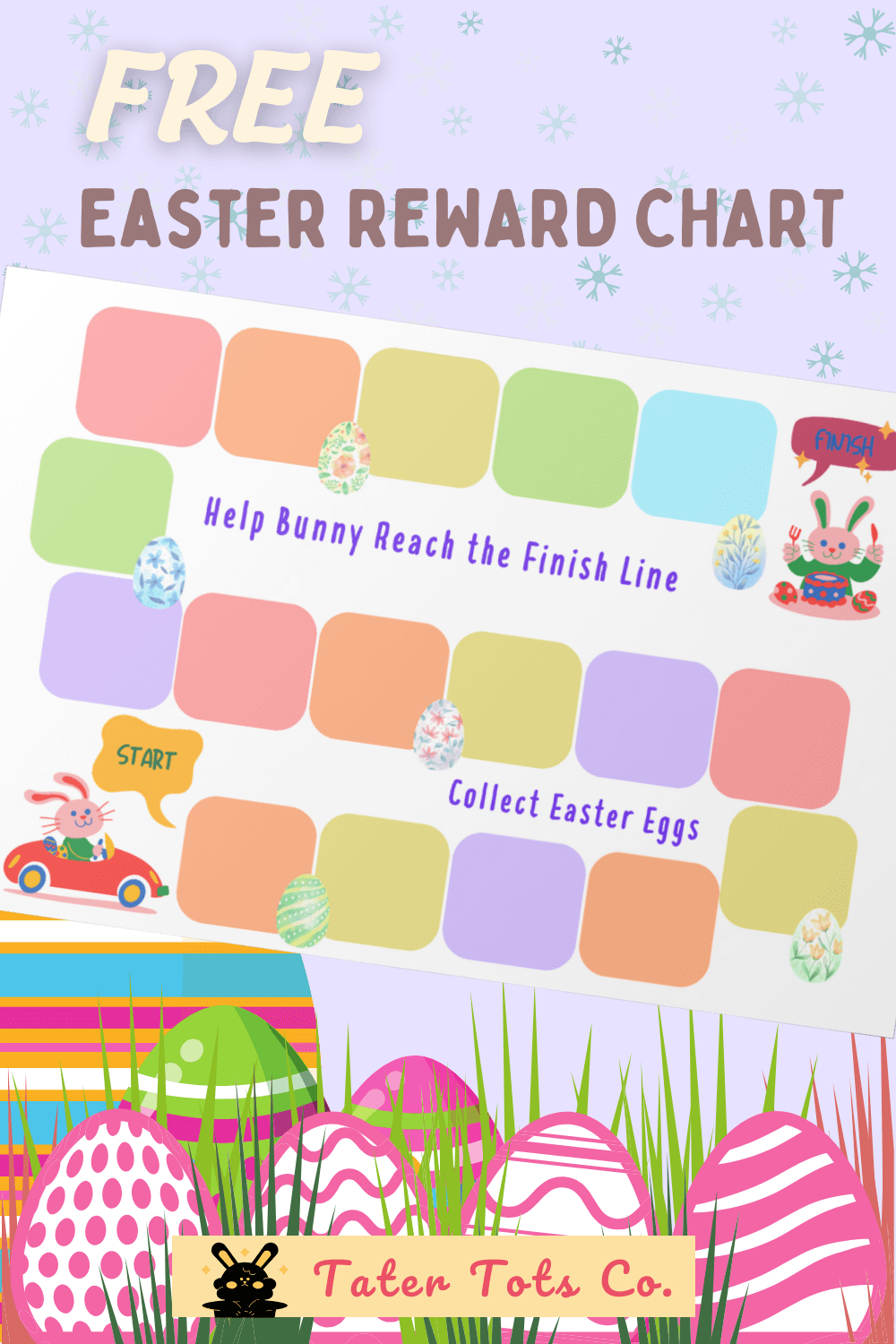

Click the link here to download the Easter Bunny Reward Chart for Kids.
By downloading our free printable, you agree to our Terms & Conditions of usage.
For other freebies for kids, visit our section on Toddler Activity Ideas: free printables here.
Other Reward Ideas for Kids
This reward chore chart can display a weekly visual schedule with routine cards to motivate good habits and behavior for kids with stickers or stamps.
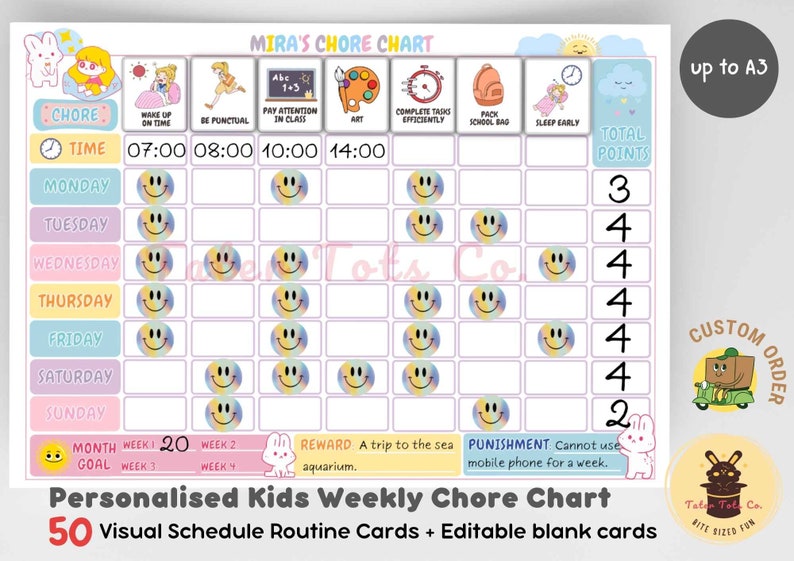
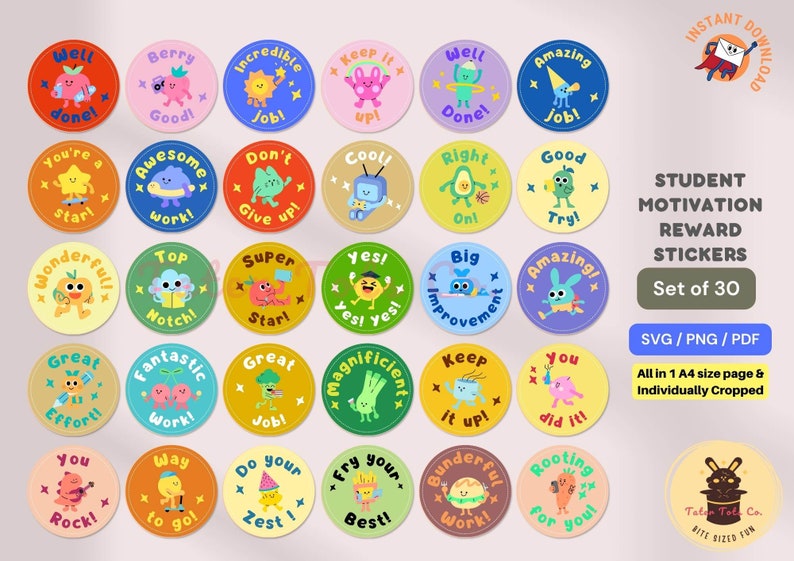
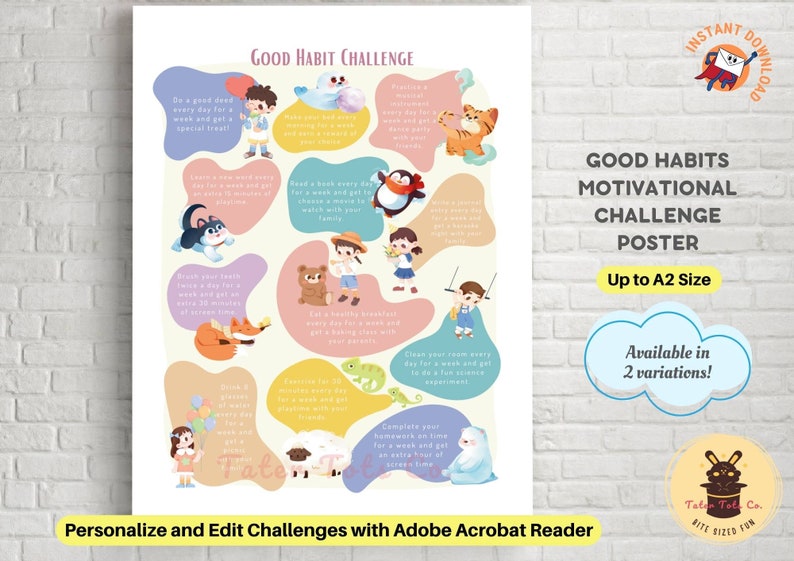
Conclusion
We hope you found our article and free printable Easter Bunny’s Reward Chart helpful and inspiring. Encouraging good behavior in children can be a challenge, but with this fun sticker game, you can make it a positive and interactive experience.
As you track their progress and reward their efforts, you’ll see their behavior improve and their excitement soar. Get ready for a joyful Easter celebration filled with well-deserved rewards and a happier, more cooperative little one. Wishing all a hoppy Easter!
Access your child's readiness for preschool, know what to prep beforehand, printable templates included.
Here's what's included in the All-in-one preschool preparatory pack,
- Preschool Things to Bring/Pack Checklist
- What I can learn in Preschool checklist
- All About Me toddler activity poster
- Daily activity schedule for parents/child/childminder
- Preschooler daily journal template
- Reward Chart for behavior management
By agreeing to download this printable you will automatically be subscribed to our newsletter to get updates on new content, blog posts, videos, and other freebies straight to your mailbox.
Follow us to receive updates on new content!

Follow us on Facebook/Pinterest for the latest blog updates, freebies, and Ukulele printables.
Warmest Regards,
Access your child's readiness for preschool, know what to prep beforehand, printable templates included.
Here's what's included in the All-in-one preschool preparatory pack,
- Preschool Things to Bring/Pack Checklist
- What I can learn in Preschool checklist
- All About Me toddler activity poster
- Daily activity schedule for parents/child/childminder
- Preschooler daily journal template
- Reward Chart for behavior management
By agreeing to download this printable you will automatically be subscribed to our newsletter to get updates on new content, blog posts, videos, and other freebies straight to your mailbox.
Follow us to receive updates on new content!
